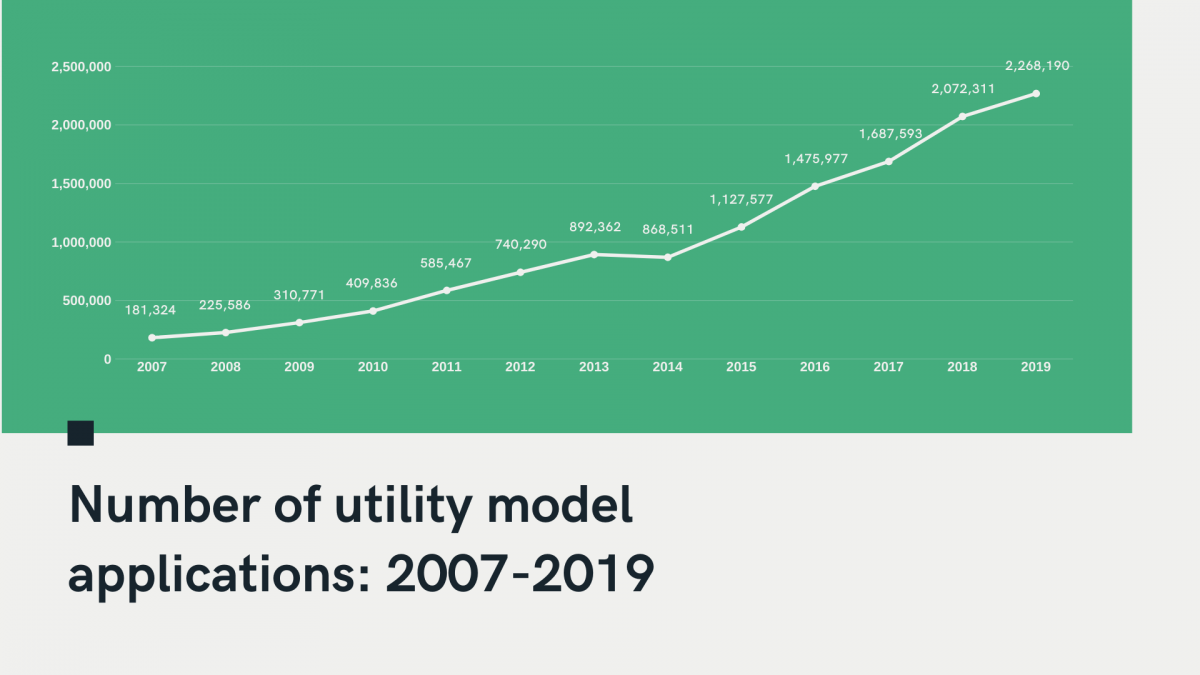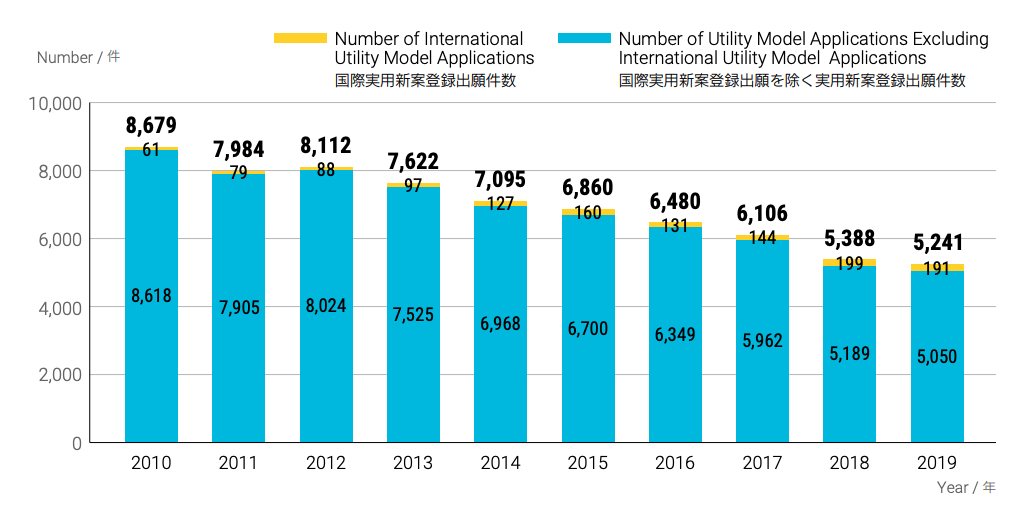Utility model applications in Japan decreased by 2.7% last year (compared to 2018’s figures). However, in China, they increased by 9.5%.
The two charts below detail the countries’ opposing situations:


- The first chart (green background) is from our upcoming report that focuses on last year’s Chinese IP trends. It is clear how the importance attributed to utility models has increased steadily over the years (excluding the period between 2013 and 2014, when there was a slight decrease).
- The second chart (white background) is taken from JPO’s latest annual report. Even though the decline seems to have slowed down in the last couple of years, the general trend suggests a loss of interest in this type of IP protection.
As we know, these patent-like documents are easier, faster, and cheaper to obtain. They have, however, shorter terms and limited applicability.
Two questions for you to consider are:
- What do you think the reason for this different approach between China and Japan could be?
- Do you think utility models will still hold a place in the near future of IP?
Our take is that Japan — which in recent years has been placing more emphasis on patent licensing and enforcement — is gradually recognizing utility models’ limited value in these areas of the patent market.
On the other hand, China has historically focussed more on quantity over quality when it comes to patents, especially against the backdrop of its plan to quickly develop its IP ecosystem. A plan that, among other measures, provides subsidies and tax incentives for the filers.

